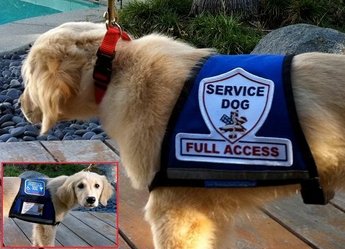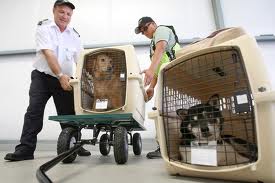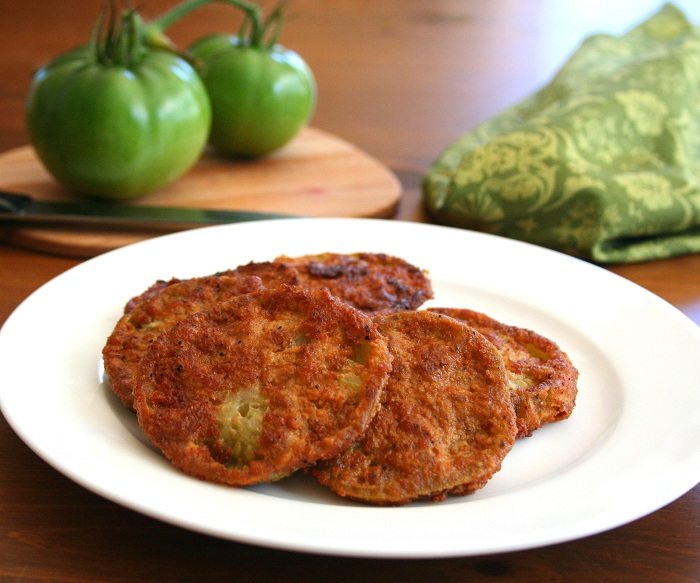Yesterday, I tried some huckleberry frozen yogurt. It was really tasty.

Jeni's huckleberry frozen yogurt. I don't know if the recipe for this particular flavor is in her book, Jeni's Splendid Ice Creams at Home, but I've heard a number of people say her ice cream recipes turn out really well.
(Photo from Jeni's)
As I was eating this lusciousness, the line from some movie played in my head: "I'll be your huckleberry." In some terrible Southern accent. The more it replayed itself, the more I thought, what is that awful line from? And what the heck are huckleberries anyway?

Huckleberries. These particular berries happen to grow wild on a farm in Washington state. Note the red stems.
(Photo from EUTOPOS farm)

The much smaller, darker huckleberries are on the left. Blueberries are on the right.
(Photo by Philip Potempa from The NWI Times)

Blueberries on the bush. As the name says, these berries are blue, often with an apparently powdery coating.
(Photo, as well as the plants themselves, from Florida Hill Nursery)

Huckleberries on the bush. These berries tend to be a darker purple or reddish-purple, and the stems are often red.
(Photo from Fat of the Land)

Where the black huckleberry grows. There are several other varieties of huckleberries that grow in many other states. But they don't have a distribution map for the growth of the phrase "I'm your huckleberry."
(Distribution map from USDA Plants Database)

Huckleberry Finn's name was supposed to indicate that he was of a lower class than Tom Sawyer. But though his name meant "insignificant," he sure turned out to be anything but that.
(Cover image from The Adventures of Tom Sawyer and Adventures of Huckleberry Finn [Signet Classics])

"Moon River" was written especially for Audrey Hepburn in her role as Holly Golightly in Breakfast at Tiffany's



Val Kilmer as Doc Holliday.
(Photo from ...And the Adventure Continues)


Doc Holliday. His mustache is way better than Val's.
(Photo from Fantastic Mustache)
The first time Val says it, all young & healthy. Have I mentioned how much I hate his fake accent?
The second time he says it, not feeling quite as chipper. He says it right away, so unless you want to see somebody get shot in the head, you don't need to watch the whole thing.
All this from a spoonful of frozen yogurt.
Sources
What's Cooking America, Huckleberries - The History of Huckleberries
Northwest Berry & Grape Information Network, Information on Huckleberry Plants
Dictionary.com, huckleberry
Online Etymology Dictionary, huckleberry
The Tombstone Epitaph, Huckleberry origin sparks various views, November 5, 2009
World Wide Words, Huckleberry

Jeni's huckleberry frozen yogurt. I don't know if the recipe for this particular flavor is in her book, Jeni's Splendid Ice Creams at Home, but I've heard a number of people say her ice cream recipes turn out really well.
(Photo from Jeni's)
As I was eating this lusciousness, the line from some movie played in my head: "I'll be your huckleberry." In some terrible Southern accent. The more it replayed itself, the more I thought, what is that awful line from? And what the heck are huckleberries anyway?
- The line is from Tombstone, said by Val Kilmer in his miserable attempt to sound like he's from Georgia. The line is actually, "I'm your huckleberry."
- Before I get into all the particulars about that expression, which is a metaphor, I need to start with the thing itself, which is a fruit.
Huckleberry, the Fruit
- As the woman at the ice cream counter told me, huckleberries are a lot like blueberries.
Huckleberries. These particular berries happen to grow wild on a farm in Washington state. Note the red stems.
(Photo from EUTOPOS farm)
- Huckleberries differ from blueberries in these ways:
- They're smaller and usually their skin is darker, more purple or reddish-purple, or red.
- They have a lot more seeds, so they have more of a crunchy texture
- They have a thicker skin
- They tend to be more tart, but with an intense flavor.

The much smaller, darker huckleberries are on the left. Blueberries are on the right.
(Photo by Philip Potempa from The NWI Times)

Blueberries on the bush. As the name says, these berries are blue, often with an apparently powdery coating.
(Photo, as well as the plants themselves, from Florida Hill Nursery)

Huckleberries on the bush. These berries tend to be a darker purple or reddish-purple, and the stems are often red.
(Photo from Fat of the Land)
- Huckleberries are not grown commercially as blueberries can be. They only grow wild. Or I should say, "Most attempts to grow huckleberries commercially in fields during the past century have failed."
- (Which makes it even more remarkable that Jeni's gets enough huckleberries to make a lot of frozen yogurt.)
- Huckleberry bushes grow in the Southeastern US, and different varieties grow out West and in Alaska.
- They grow especially well in areas where forest fires have occurred.
- One site says, "About a third of a grizzly bear's diet consists of huckleberries." I'm not sure I can verify that, but I mention it because it gives you an idea of where huckleberries grow -- where grizzly bears live. And there must be a lot of them growing there.
Huckleberry, the Term
- Now that we know something about the fruit, what does it mean to call someone, or yourself, a huckleberry?
- Most people say that the phrase "I'll be your huckleberry" or "I'm your huckleberry" means "I'm your man." As in, you want somebody to do something for you? Or, you think nobody's tough enough to take you on? Well, I'm your man. Or woman. As in, accepting a challenge or a dare.
- But how did "I'm your man" (or woman) become "I'm your huckleberry"?
- Some people say that the phrase comes from the South, where there are lots of huckleberries, or maybe from the West.
- That's the extent of their explanation. I guess they mean that the saying just grew out of there, the same way that huckleberry bushes grew? Pretty flimsy explanation, in my opinion.

Where the black huckleberry grows. There are several other varieties of huckleberries that grow in many other states. But they don't have a distribution map for the growth of the phrase "I'm your huckleberry."
(Distribution map from USDA Plants Database)
- Curiously, the earliest instance of the use of huckleberry as slang means somebody who's nice and sweet, and also kind of a wimp, or innocent and therefore easily tricked.
- Another slang meaning of huckleberry is someone who is small and insignificant.
- Mark Twain told an interviewer in 1895 that he chose the name Huckleberry to establish that Huck Finn was a boy "of lower extraction or degree" than Tom Sawyer. So he was definitely thinking of the small & insignificant meaning of huckleberry.

Huckleberry Finn's name was supposed to indicate that he was of a lower class than Tom Sawyer. But though his name meant "insignificant," he sure turned out to be anything but that.
(Cover image from The Adventures of Tom Sawyer and Adventures of Huckleberry Finn [Signet Classics])
- That "small & insignificant" meaning might be the origin of another meaning of huckleberry, which is that of a sidekick. The theory here is that, compared with the big cheese, the sidekick tends to be overlooked.
- The sidekick meaning might be what's meant in the lyrics of "Moon River:"
Two drifters off to see the world
There's such a lot of world to see
We're after the same rainbow's end
Waiting 'round the bend
My huckleberry friend, moon river and me
- But "My huckleberry friend" seems to mean more that we're partners, the sidekick river and I, rather than that the river is the lesser of us two.

"Moon River" was written especially for Audrey Hepburn in her role as Holly Golightly in Breakfast at Tiffany's
- But these definitions -- small & insignificant, sidekick, a sweet & easily duped rube -- are the opposite of the meaning of the "I'm your man" phrase. By these definitions, saying "I'm your huckleberry" would be calling yourself a pushover, or someone of no account.
- I wonder if the phrase is one of those reverse psychology things. As in, you might think you can overlook me like you'd ignore a huckleberry, but I am in fact the huckleberry who is going to kick your ass. Sort of like a David & Goliath thing. That's just a guess of mine.
- Someone else thinks that the phrase was originally "I'm your hackle-bearer." Hackles in the Old West were handles on caskets. So you'd be saying, "I'm the one who's going to put you in your coffin and carry you to your grave." That's a pretty ballsy thing to say.
- According to this theory, then, hackle-bearer became hackle-berry which because huckleberry.
- That seems like quite a stretch. But the word huckleberry has itself gone through many changes.
- When Europeans came to North America, they encountered small, dark berries that reminded them of bilberries. One regional dialect's name for bilberry is hurtleberry. So they called these new berries hurtleberries.
- It didn't take long at all before that word morphed into huckleberry. In fact, the earliest known use of it is from 1670, so it's as if the colonists got off the boat, heard the word hurtleberry, and said no, I'm in a new country now, I'm calling it something else.
- (Hurtleberry comes from the Old English word whortleberry, so some etymology dictionaries will start huckleberry's origins with whortleberry).
- So I suppose it's possible that the phrase could have undergone a similar transformation. But I'm skeptical.
- So the etymological origins of the phrase "I'm your huckleberry" remain unclear. But the movie where the line was said is a known thing. It came from Tombstone. I'll finish with some clips.


Val Kilmer as Doc Holliday.
(Photo from ...And the Adventure Continues)

Doc Holliday. His mustache is way better than Val's.
(Photo from Fantastic Mustache)
The first time Val says it, all young & healthy. Have I mentioned how much I hate his fake accent?
The second time he says it, not feeling quite as chipper. He says it right away, so unless you want to see somebody get shot in the head, you don't need to watch the whole thing.
All this from a spoonful of frozen yogurt.
Sources
What's Cooking America, Huckleberries - The History of Huckleberries
Northwest Berry & Grape Information Network, Information on Huckleberry Plants
Dictionary.com, huckleberry
Online Etymology Dictionary, huckleberry
The Tombstone Epitaph, Huckleberry origin sparks various views, November 5, 2009
World Wide Words, Huckleberry









































